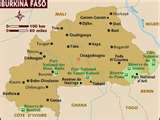
I remember listening to this song on one of the Putumayo‘s CDs. Here is ‘So Long’ by Majek Fashek. This is a song to all Africans, and children of Africa, to arise and awake from their sleep. This is a song about unity, and remembrance of our great heritage. I had to share it with you all. Enjoy! and remember what Majek Fashek says: “Arise from your sleep Africa … There’s work to be done Africa … if we unite, we will be free … we’ve been sitting down for so ooo long … ”
Arise from your sleep Africa
Arise from your sleep America
There’s work to be done Africa
There’s work to be done America
if we unite, we will be free so long, for too long
so long, for too long
we’ve been sitting down for so oooo long
we’ve been fooling round for too oooo long
we’ve been sitting down for so oooo long
so long, so long
for too long, for too long
Oh Lord, can you hear me now
Oh Lord
Remember, remember, long long time ago
when we used to live like prince and princess
Remember, remember, the pyramids of Egypt
when we used to live like prince and princess
Remember, remember,
Who had a dream for you Africa
Remember, remember, Martin luther King
Who had a dream for you America
They say you are black, they say you are brown
They say dem white, they say you are brown
But only the Angels of God is white
But only the Angels of God is white
so long, so long
for too long, for too long
we’ve been sitting down for so oooo long
we’ve been fooling round for too oooo long
Arise from your sleep Africa
Arise from your sleep America
There’s work to be done Africa
There’s work to be done America
if we unite, we will be free so long, for too long
so long, for too long
Remember, remember,
Who had a dream for you Africa
Remember, remember, Martin luther King
Who had a dream for you America
Remember, remember, King Selassie
Who was betrayed by his people
Remember, remember, Lord Jesus Christ
Who died for you and I for salvation
They say you are black,[do you believe?]
they say you are brown [do you believe?]
But only the Angels of God is white
But only the Angels of Jah is white
we’ve been sitting down for so oooo long
we’ve been fooling round for too oooo long
so long, so long
for too long, for too long
so long, so long
for too long, for too long














